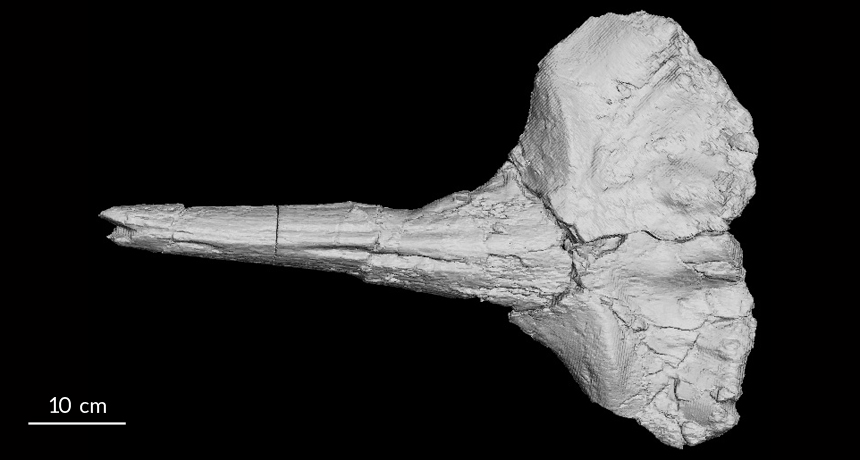A 17-million-year-old whale fossil is helping scientists pinpoint when the East African Plateau started to rise. Determining when the uplift happened has implications for understanding human evolution, scientists say.
Shifts in the Earth’s mantle pushed the East African Plateau upward sometime between 17 million and 13.5 million years ago, researchers report March 16 in the Proceedings of the National Academy of Sciences. Their analysis was based on a Turkana ziphiid fossil first discovered at the edge of the plateau in Kenya in 1964. The beaked whale’s skull was described in a 1975 paper, then misplaced until 2011, when it was rediscovered in a fossil collection kept at Harvard University.

A beaked whale that got stuck in a river 17 million years ago is helping to pinpoint when the East African Plateau began to rise.
Studying the fossil and the original field notes describing its discovery, the team, led by Henry Wichura of the University of Potsdam in Germany, determined that the whale must have swum up an ancient river and gotten stuck. Re-creating features of the ancient river suggests that the whale died and was buried in sediments that sat at an elevation only 24 to 37 meters above sea level. Its skull, however, were found at an elevation of 620 meters. That means the skull, and the sediments that held them, were pushed upward at least 590 meters in the last 17 million years.

This map shows the present elevation of the East African Plateau where the whale fossil was found. The region has undergone many geological changes, including massive uplift, an ancient lava flow, as well as rifting during the Jurassic and Cretaceous periods (200 million to 65.5 million years ago) and from the Miocene period (23 million years ago) to today.
Ancient lava flows show the plateau was already pushed upward by 13.5 million years ago, so the fossil find helps pinpoint the uplift to a 3.5 million year period, the researchers conclude. They note that the plateau’s rise changed the climate in the region from dense rainforest to drier open grassland, which may have driven human evolution.
Source: Article by Ashley Yeager in Science News



 March 17th, 2015
March 17th, 2015  Riffin
Riffin  Posted in
Posted in  Tags:
Tags: 